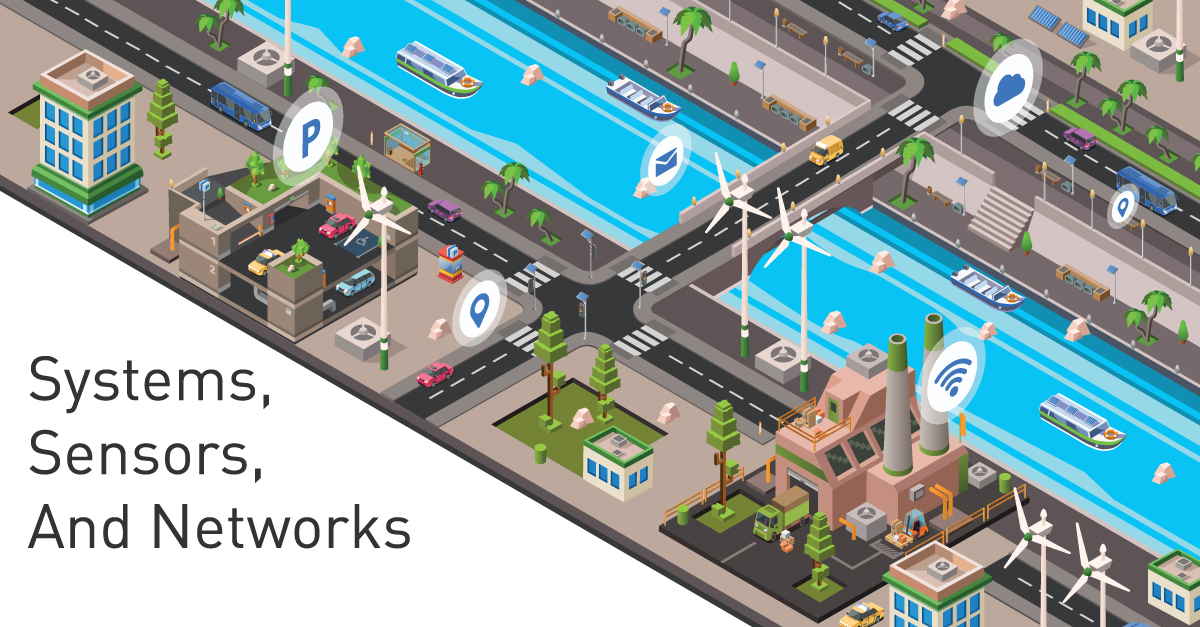Smart City: Systems, Sensors, and Networks
Annie Paquette
May 29, 2019
- Categories:
- For Fun
- Tags:
- intelligent PDU

For those of us who work in the data center and IT space, the idea of a smart city is not overly surprising. In fact, the smart city is a macrocosm of the workings of a data center. Servers, powered by an intelligent PDU, process and collect data across complex networks. Data center environmental monitoring systems manage the cooling and power ‘utilities’ through a network of sensors of varying types. And thanks to Moore’s Law, the amount of data that is collected, processed, and stored has grown exponentially.
Just as the invention of the silicon transistor led to the development of the integrated circuit, Moore’s law has guided successive generations of chip development to provide even greater functionality in smaller packages. Now, they consume less power per operation and cost less per unit. Today’s microprocessors and microcontrollers cost pennies apiece and deliver wireless connectivity over a wide range of distances and bandwidths. They can even be powered by a single cell battery.
These devices are designed into an ever-growing range of applications that provide measurement, monitoring, and control capabilities found in products and services throughout our everyday lives. When combined with the appropriate sensors and power source, these microcontrollers deliver a constant stream of data that can be collected and analyzed to deliver both actionable intelligence and granular control. They appear in everything from traffic lights to the Fitbit or Apple Watch you wear.
In the smart city, sensors are everywhere. They monitor air quality and utility meters that feed the cities’ buildings and transportation infrastructure. For years, sensors have helped regulate and control traffic, monitor temperature, and enable fire and security systems. New technologies have added to the wide variety of data available to cities, including sensors that monitor building health, provide facial recognition, detect signs of seismic activity, and let you know when your recycling bin is full.
The smart city also has another sensor that will allow it to collect very personal data: you. With 60% of the world’s population carrying a smart phone or other device, citizens themselves have become part of the urban data collection fabric. Apps like Waze link people, data, and infrastructure by providing intelligent mapping and updated directions based on traffic feedback from other Waze users. Similar technology is used to protect the health of smart city residents, such as real-time heart rate and glucose level monitoring.
As our cities begin to look and act a lot like a data center, utility uptime and network resiliency will become everyday concepts. Already, many city-managed systems are deemed ‘too critical to fail.’. They are thus connected to uninterruptible power supplies and data center PDUs that allow remote power management and the ability to automatically reset failing sensors and devices.
Server Tech makes the PDU that links the smart city to the future they promise. It delivers power where and when needed. It helps the microcontroller transmit data to the network, on to the devices that deliver the data, and finally to the people who then act on the information. For more on how the process works, read the ‘Smart Cities Run on Smart Power’ white paper by Marc Cram.
Thanks for your submission. One of our Power Strategy Experts will get back to you shortly.